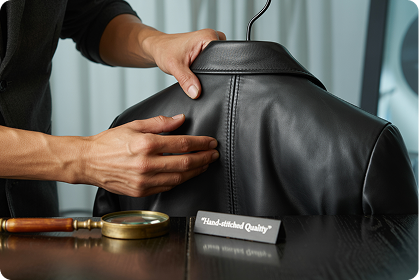
Proper Care for Leather Goods
Leather Care: Pro Guide for Lasting Results
Keep leather goods and car interiors looking new with safe, professional routines. In this guide, LeTech USA explains how to clean, protect, condition and refresh different leather types — and when to add a refined leather fragrance for that premium finish.

General Recommendations
The leather market is diverse, and correct care starts with identifying the material. When in doubt, test products on an inconspicuous area and follow pH-balanced, leather-safe systems.
- Use dedicated products. Avoid harsh solvents or alkaline cleaners that can bloom, dull or de-plasticize finishes.
- Test first. Always patch-test on a hidden spot before full application.
- Choose the right tools. Most modern goods have a protective top-coat — use soft microfiber, brushes for suede/nubuck, and foaming sprayers where suitable.
- Store correctly. Dark, dry, ventilated spaces away from heat and UV help prevent drying and color shift.
- Dry at room temperature only. Heat accelerates damage and can warp finishes.
- Protect regularly. Apply protectors/conditioners as recommended to reduce soiling and UV impact.
Aniline & Pull-Up Leather
These leathers have minimal or no pigmented top-coat, so they’re absorbent, soft and visually rich — and they require gentle, precise care. Protect soon after purchase and repeat 3–4× per year in high-wear zones.
- Clean with mild, pH-balanced foam; avoid over-wetting.
- Protect with breathable creams/waxes compatible with aniline finishes.
- For patina or discoloration in contact areas, book a local recolor/top-coat service instead of aggressive cleaning.
Suede & Nubuck
No top-coat, a delicate nap, and a luxury hand — these materials dislike water and require dedicated products. Brush along the nap; use nubuck sponge/eraser for marks.
- Prefer dry methods; spot clean only with dedicated suede/nubuck chemistry.
- Avoid soaking and household detergents to prevent stains and fiber collapse.
- Store with airflow; use protective sprays validated for nubuck if needed.
Protected / Coated Leather
Semi-aniline and pigmented leathers include a thin protective film or pigment, giving practical resistance to soiling. Clean with foam, then apply protectors that maintain breathability and touch.
- Use soft cloths only; avoid scouring pads.
- Refresh high-touch areas more frequently to reduce dye transfer.
- For vintage two-layer “antique” leathers, keep creams light to preserve the optical break-through effect.
Faux / Synthetic Leather
Modern synthetics range from premium PU to recycled composites. They can handle mild detergents and water-based cleaning better than aniline, but still avoid aggressive solvents and high heat.
Want a more luxurious impression? Enhance tactile feel and the premium “leather aura” with LeTech Leather Aroma Classic or Fresh.
Leather Aroma: Classic & Fresh
After cleaning and protecting, complete the experience with a refined leather fragrance. Both variants are available on one page: Leather Aroma Classic and Leather Aroma Fresh.
- Classic: warm woody-musky accord — elegant and cozy for premium goods and post-restoration delivery.
- Fresh: clean, airy brightness with subtle citrus — ideal for daily use and modern car cabins.
Application Tips
- Mist lightly with ventilation on recirculation; avoid soaking surfaces.
- After recolor/top-coat work, let coatings fully cure before applying aroma.
- For sensitive users, start with a single short spray and reassess in 24 hours.
Conclusion & Next Steps

























